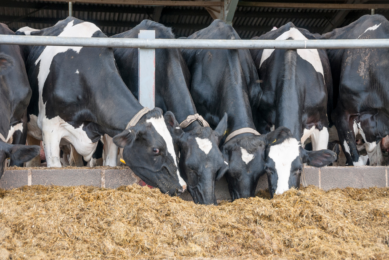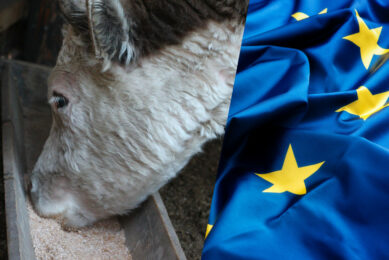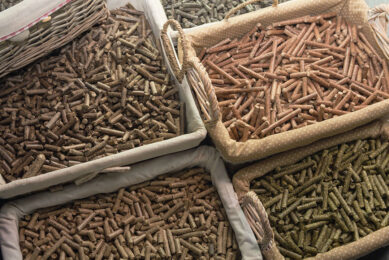Industrial Compound Feed Product
In the last century Dutch feed manufacturers have developed into an industry of high quality standards in terms of feed safety and traceability. Average production of compound feed peaked in 1993 with 16.794 million tonnes and since then gradually declined to 12.846 million tonnes in 2003. Since then feed production is on the increase again.
Annual compound feed production is increasing again after a decade of steady
decline, caused by a reduction in numbers of animal farms and several crises
with animal diseases. Also the number of farms dropped significantly, however
this is not directly reflected in the number of animals housed, because animal
production from these farms was taken over by remaining colleagues that saw
opportunities to expand their farm. Big farms found opportunities to grow even
bigger. Every week on average about 50 farms quit their activities. At the end
of 2007 there were an estimated 76.700 farms left. Total feed production in 2007
is estimated at 13.308 million tonnes.
 |
Source: Fefac |
Cattle farming is the only sector that gradually is using less compound feed.
One of the reasons is that there is more fodder available, but the main reason
is the declining number of dairy cows and replacement heifers. The number of
dairy cows went down from 1.5 million in 2000 to 1.42 million in 2006 on a total
of 3.745 million head. This is also an effect of the milk quota regime that is
in place in the European Union. Perhaps the demand for milk and its products
leads to an increase in the number of dairy cows in 2008. Intensive beef farming
is insignificant in the Netherlands and cow-calf operations feed their cattle
mainly on roughage. With 844,000 head, calves held for veal production is quite
significant in The Netherlands. These calves are mostly fed on milk
replacers.
 |
| Source: Fefac |
With an estimated growth of 5.4% in 2006 and another 2% in 2007 feed
production for pigs is on the rise again after years of decline. The number of
pigs is increasing and in 2006 more than 11.356 million pigs were counted. This
is still far less than at it peaks in 1979 when a mere 15 million pigs were
housed. The swine fever crisis in 2002/03 severely diminished the Dutch pig
herd. Also a restructuring of the sector diminished pig numbers significantly.
Now there is more confidence and feed production for pigs is on the rise again.
In 2007 around 5.717 million tonnes of pig feed were produced.
 |
| Source: Fefac |
The Dutch poultry industry is built on two strong pillars, layers and
broilers. In 2006 the Dutch Statistical Bureau CBS calculated 41.9 million
broilers and more than 30 million layers. Although the threat of the avian
influenza is constantly flying over the country, so far the commercial industry
has not been affected. Poultry feed production is on the rise and 2007
production is estimated at 3.509 million tonnes of which 1.542 million tonnes
was consumed by broilers and 1.967 million tonnes by layers.
 |
| Source: Fefac |
Feeds for other farm animals are not significant in the Netherlands compared
to feeds for the three main species. In 2007 some 691,000 tonnes of milk
replacers were produced mainly for the quite intensive veal calf industry and
for replacement heifers on dairy farms. The 213,000 tonnes of other compound
feeds are fed to sheep, ducks and turkeys. Pet food production was not
recorded.
 |
| Source: Fefac |












